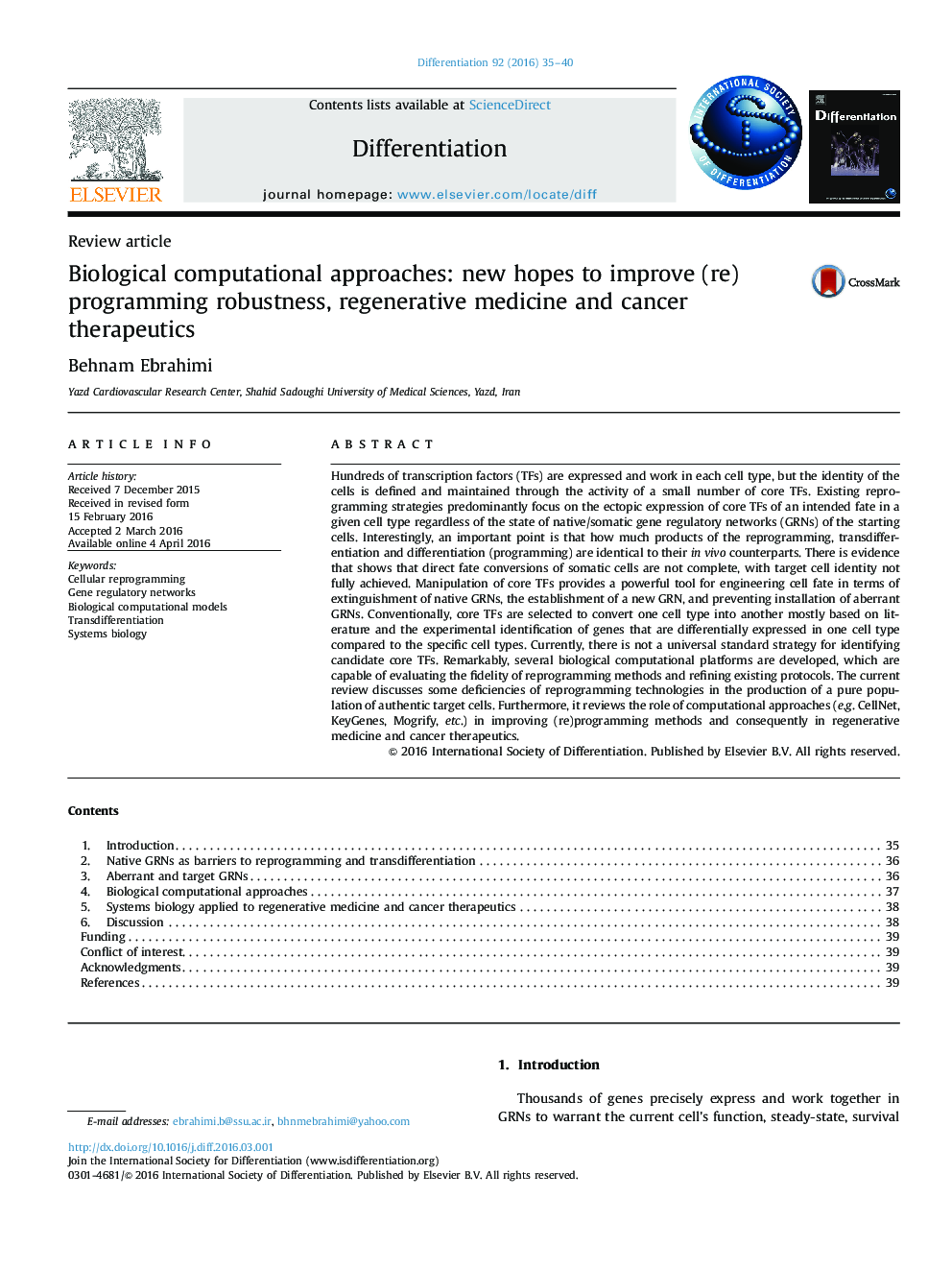| Article ID | Journal | Published Year | Pages | File Type |
|---|---|---|---|---|
| 2119259 | Differentiation | 2016 | 6 Pages |
•The activity of a small number of core transcription factors defines the cell identity.•Native gene regulatory networks impede direct reprogramming.•Specific biological computational platforms can predict core transcription factors for reprogramming purposes.•Specific computational approaches are capable of refining existing reprograming protocols and improving reprogramming robustness.
Hundreds of transcription factors (TFs) are expressed and work in each cell type, but the identity of the cells is defined and maintained through the activity of a small number of core TFs. Existing reprogramming strategies predominantly focus on the ectopic expression of core TFs of an intended fate in a given cell type regardless of the state of native/somatic gene regulatory networks (GRNs) of the starting cells. Interestingly, an important point is that how much products of the reprogramming, transdifferentiation and differentiation (programming) are identical to their in vivo counterparts. There is evidence that shows that direct fate conversions of somatic cells are not complete, with target cell identity not fully achieved. Manipulation of core TFs provides a powerful tool for engineering cell fate in terms of extinguishment of native GRNs, the establishment of a new GRN, and preventing installation of aberrant GRNs. Conventionally, core TFs are selected to convert one cell type into another mostly based on literature and the experimental identification of genes that are differentially expressed in one cell type compared to the specific cell types. Currently, there is not a universal standard strategy for identifying candidate core TFs. Remarkably, several biological computational platforms are developed, which are capable of evaluating the fidelity of reprogramming methods and refining existing protocols. The current review discusses some deficiencies of reprogramming technologies in the production of a pure population of authentic target cells. Furthermore, it reviews the role of computational approaches (e.g. CellNet, KeyGenes, Mogrify, etc.) in improving (re)programming methods and consequently in regenerative medicine and cancer therapeutics.
